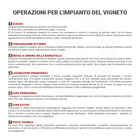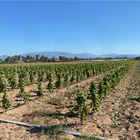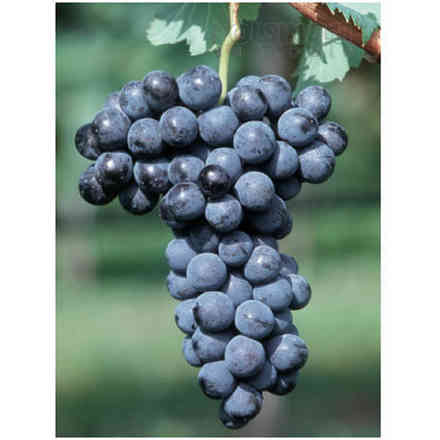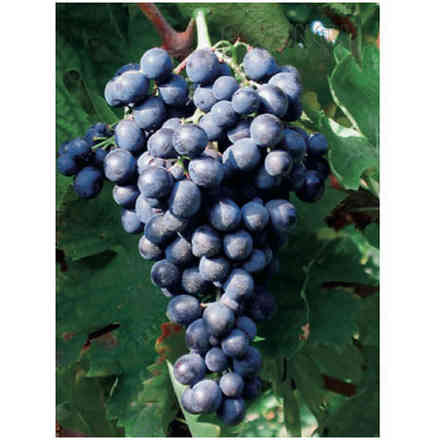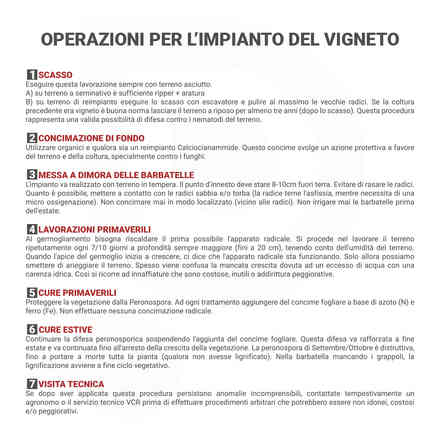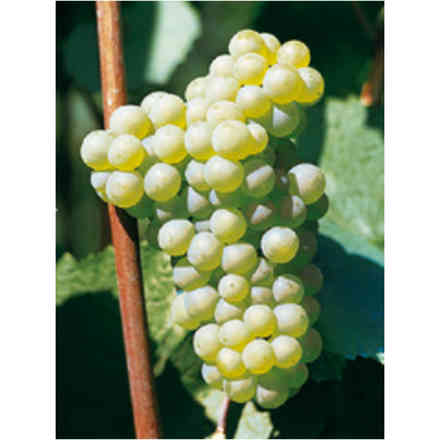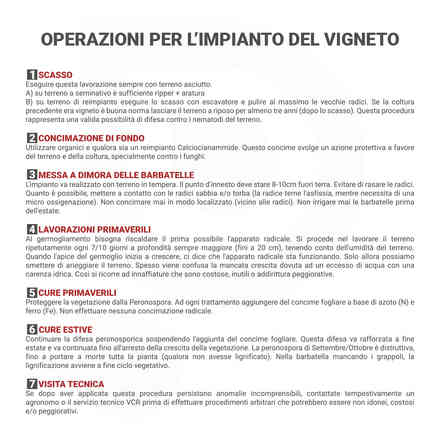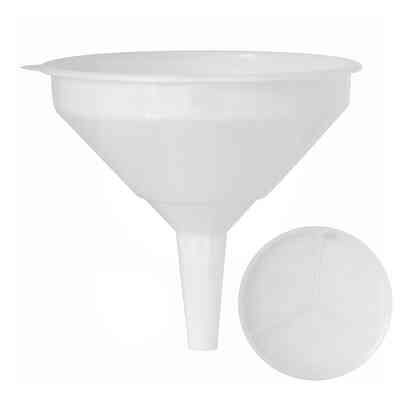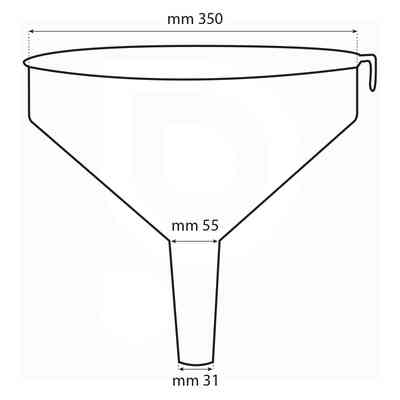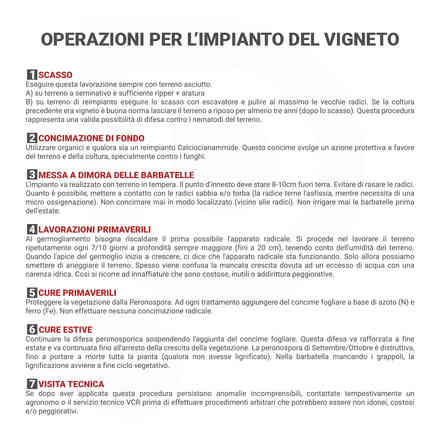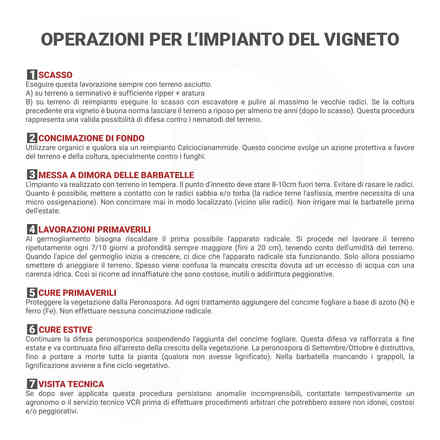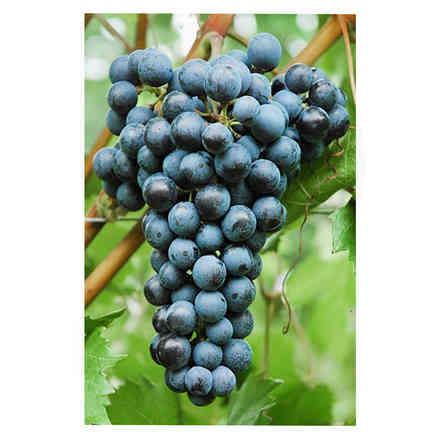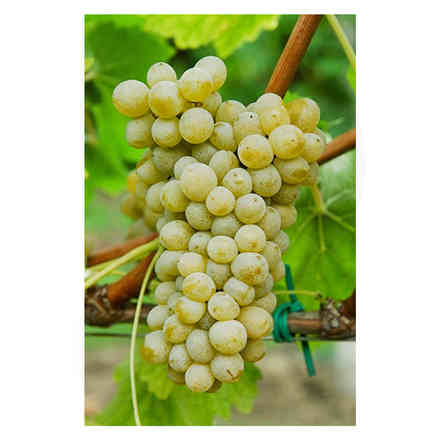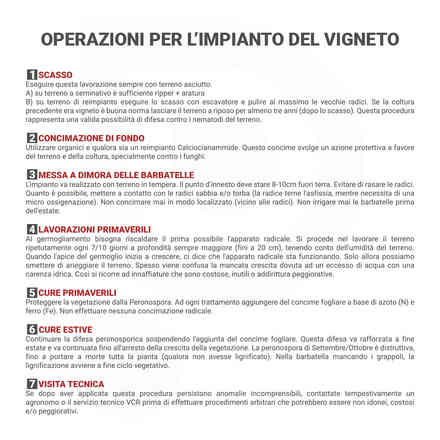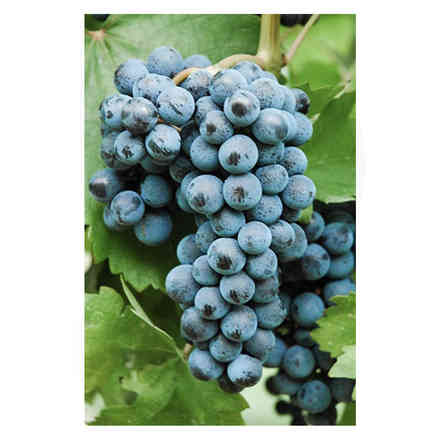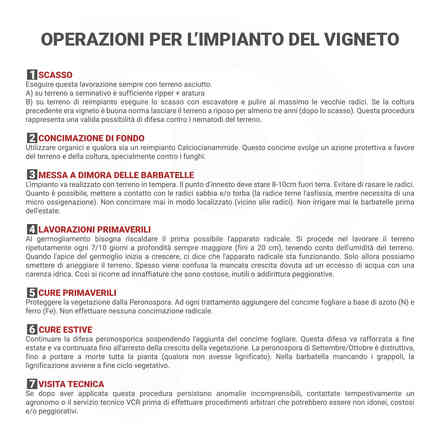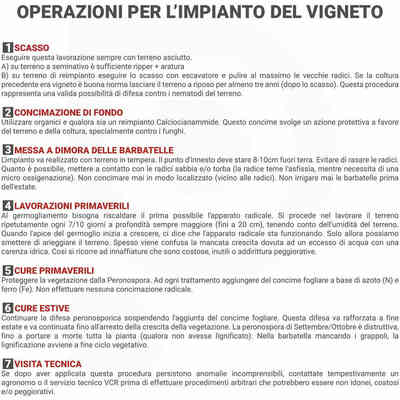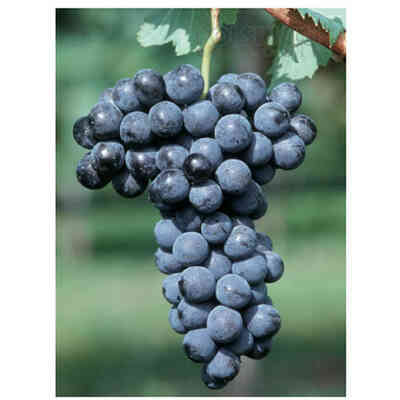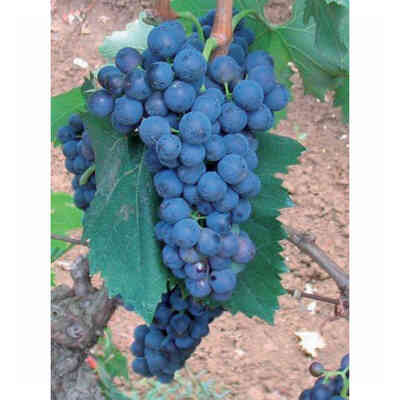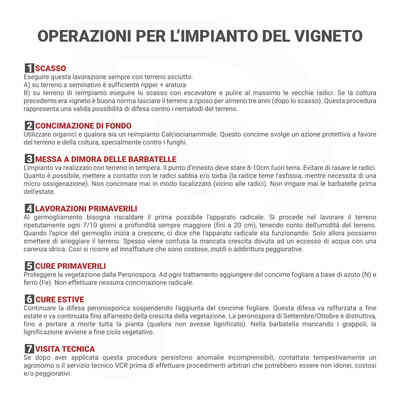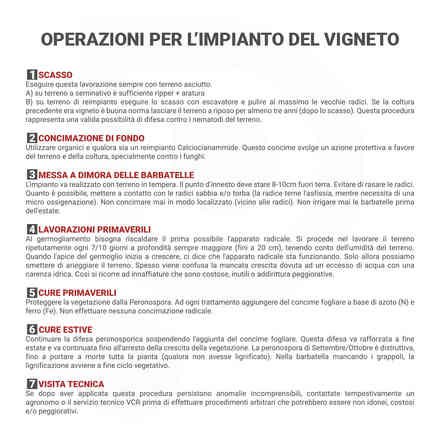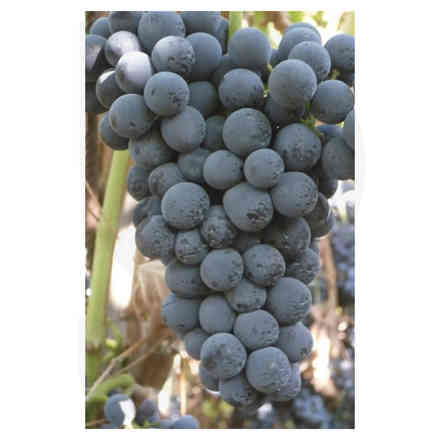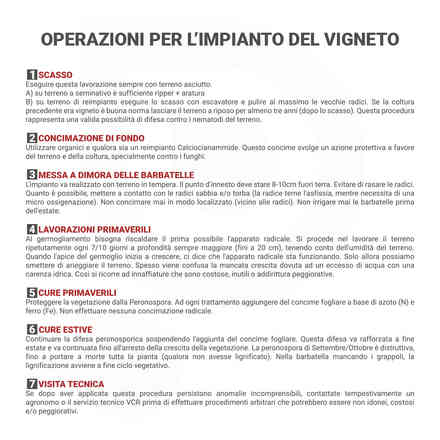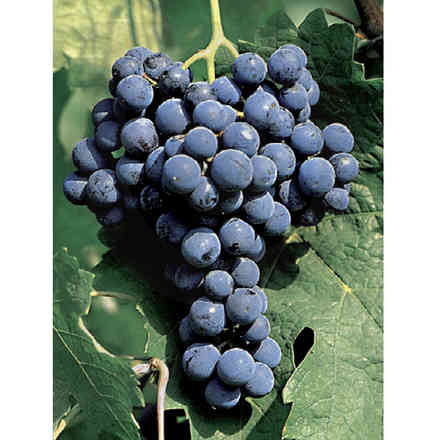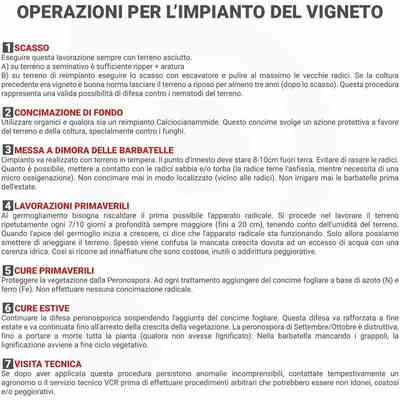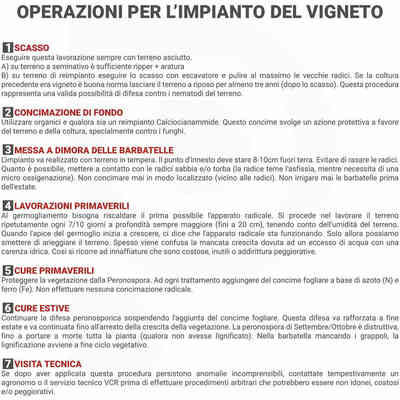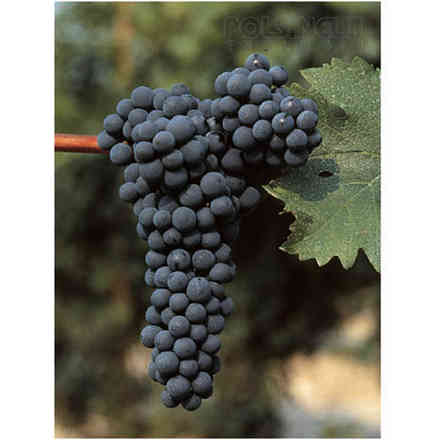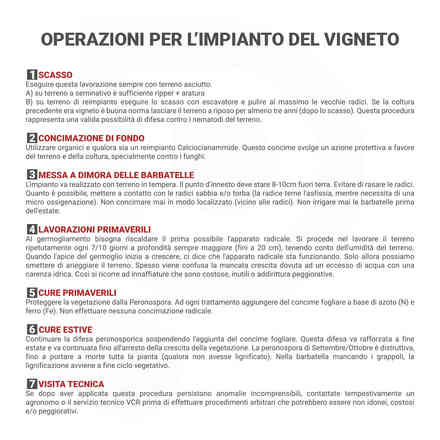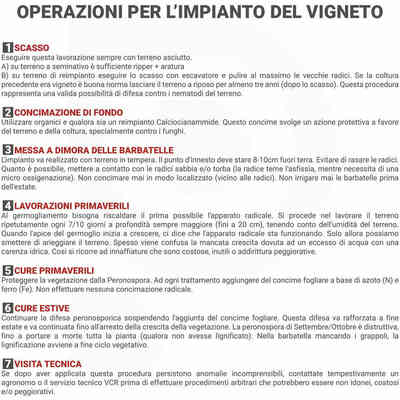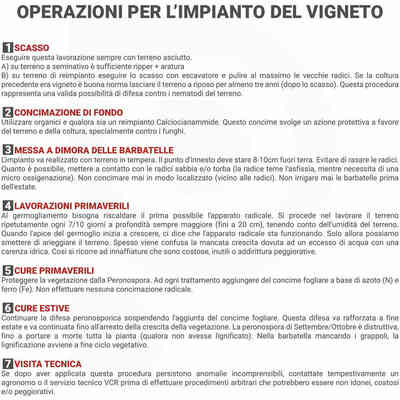
Merlot Kanthus (10 pieces)
Description
 AUTHORIZED RETAILER
AUTHORIZED RETAILER
MERLOT KANTHUS (10 pieces)
These are protected varieties with a monopoly, the reproduction or multiplication of which is prohibited without the consent of the breeders, and with the purchase you undertake not to reproduce or multiply the variety.
RED BERRY VINE OBTAINED BY CROSSING MERLOT AND 20-3 (COD. UD. 31-122)
Rootstocks: 1103P - K5BB - S04 - 140RU - 420A (We will send the graft carrier available at the moment)
Resistance characteristics: Good to downy mildew and powdery mildew
AMPELOGRAPHIC DESCRIPTION
Some characters of the adult leaf are similar to those found for the parent Merlot. Bunch slightly smaller than average in size, cylindrical, semi-compact with a pronounced wing. Berry slightly smaller than average in size, ellipsoidal in shape; thick skin with high pruine, blue-black in colour. Flesh is slightly firm, slightly herbaceous.
- Sprout: 10-20 cm
- Apex: semi-open, almost glabrous, with anthocyanin pigmentation at the edges.
- Apical leaves (1st to 3rd): wedge-shaped, bronze-coloured with red margins, almost glabrous.
- Basal leaves (4th and later): orbicular in shape and glabrous.
- Sprout axis: pastern-shaped.
- Herbaceous shoot: half-erect; circular cross section, striated outline; internodes with red colouration on dorsal side, green and red on ventral side; nodes with green and red colouration on both sides. Nodes and internodes hairless.
- Tendrils: bifid or trifid, long, intermittent, 2 or fewer consecutive tendrils.
- Flower: hermaphrodite, five stamens fully developed and erect, gynoecium fully developed, corolla detached normally, self-fertile.
- Adult leaf: medium-sized, wedge-shaped and usually five-lobed. The petiolar sinus is open and has a U-shaped or staple base. Lateral sinuses are deep. The upper page has a slight red colouration near the petiolar point; a twisted leaf profile, surface with low to medium blistering, medium depressions, undulations present. Leaf margin has medium-sized teeth, medium length and both sides straight or convex. Both leaf pages are glabrous.
- Petiole: length equal to the leaf midrib.
- Autumn colouring of the leaves: reddish.
- Bunch at industrial maturity: medium size (cm 13-17, g 90-260, average weight g 160), cylindrical, with a wing similar to a small bunch, medium compact; short peduncle; average resistance to destemming.
- Berry: medium size, average weight 2.0 g, wide ellipsoidal shape, uniform inside the bunch. The skin is medium-sized with a high level of bloom, blue-black in colour. The flesh is slightly firm, with a slight herbaceous taste. Juice is colourless.
- Grapes: medium length and low to medium weight.
- Woody shoot: circular cross-section, striped surface; brownish colour, no lenticels; medium-long internodes (about 13-14 cm), diameter about 8 mm.
- Trunk: medium vigour.
VEGETATIVE PHENOMENA
- Sprouting: medium, second/third decade of April.
- Blossoming: medium, third decade of May / first decade of June.
- Grape ripening: early, last decade of August / first/second decade of September.
CULTIVATION CHARACTERISTICS AND ATTITUDES
- Vigour: discreet, assurgent vegetation.
- Training system: suitable for any training system, Guyot and spurred cordon recommended.
- Production: regular and constant.
- Real basal fertility: high (basal fertility / real fertility = 1.01).
- Average number of inflorescences per shoot: 2.
- Resistance to abiotic and biotic stresses: withstands winter lows of -22°C. Moderately sensitive to magnesium deficiency and drought. Resistant to downy mildew, tolerant to powdery mildew.
- Behaviour with respect to propagation by grafting: no problems of disaffinity of grafting on 1103 Paulsen, Kober 5BB, SO4. Nursery yield: 68% on SO4.
RULES TO PLANT A VINEYARD
1. PLOW
You must perform this operation always with dry soil
A) On arable land is generally sufficient to ripper + to plow
B) On planting soil is generally sufficient to plow with an escavator and to clean the old roots.
If the previous crop was a vineyard, it is a good idea to leave the soil fallow for at least three years (after plowing). This procedure represents a valid possibility of defence against soil nematodes.
2. SOIL FERTILIZATION
Use organics and if it is a reimplantation, use Calciumocyanamide.
This fertiliser has a protective effect on the soil and the crop, especially against fungi.
3.PROPAGATING GRAPE VINE CUTTINGS
The planting should be carried out in temperate soil. The grafting point should be 8-10 cm above ground. Avoid shaving the redices. As much as possible, put sand and/or peat in contact with the roots (the root fears asphyxiation, while it needs a micro-oxygenation). Never fertilize in a localized manner (near the roots). Never water the rooted cuttings before summer.
4.SPRING WORKS
When sprouting, the root apparatus must be heated as soon as possible. Work the soil repeatedly every 7/10 days at increasing depth (up to 20 cm), taking into account the moisture of the soil. When the apex of the bud starts to grow, it means that the root system is functioning. Only then can we stop watering the soil. Failure to grow due to access to water is often confused with a lack of water. This is why watering is used which is expensive, useless or even worse.
5.SPRING CURE
Protect vegetation from Peronospora. To each treatment add nitrogen (N) and iron (Fe) foliar fertilizer. Do not make any radical fertilization.
6.SUMMER CURE
Continue with the defense against Peronospora by suspending the addition of the foliar fertilizer. This defense should be reinforced in late summer and should be continued until vegetation growth stops.
The September/October blight is destructive, to the point of bringing death to the whole plant (if it has not lignified). The rooted vine lacks clusters, so lignification occurs at the end of the vegetative cycle.
7.TECHNICAL VISIT
If incomprehensible anomalies persist after this procedure, contact an agronomist or the VCR Technical Service promptly before carrying out arbitrary procedures which may be unsuitable, expensive and/or worsening.








